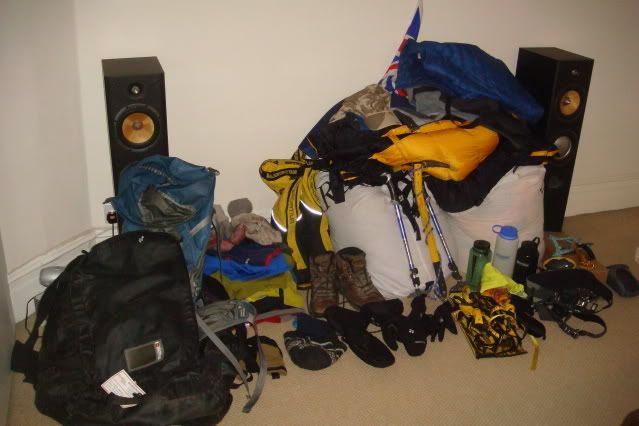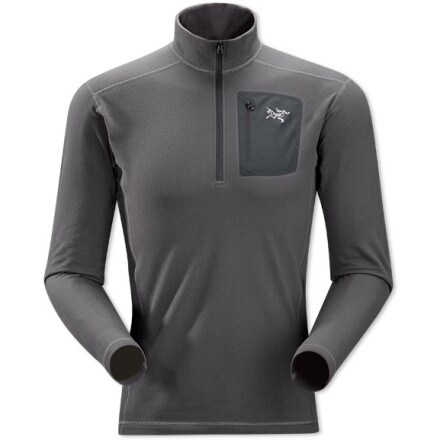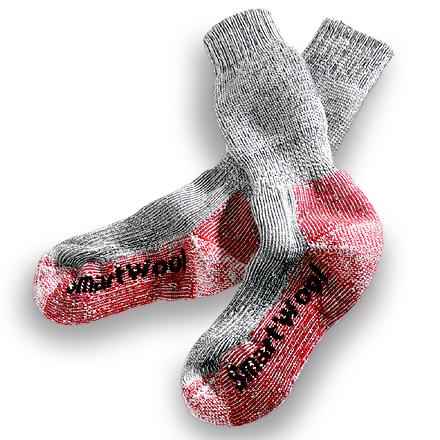 |
| Obligatory kit shot |
It goes without saying that it can get extremely cold up here. I will wear my high altitude boots, down jacket and salopettes, thermal under trousers and base layer plus a fleece layer (although on some days I may be able to keep this in my pack).
For head wear a thick balaclava, a warm hat plus cat 4 glacier glasses or goggles (depending on the wind). On my hands I will normally use my warm mitts with liner gloves but will also carry my down mitts in case it gets too cold for them or if I get delayed, the body cools down very quickly if it is not working so any delay can be dangerous higher up and you will need to keep the extremities moving to keep them as warm as possible.
Also ice axe, harness, crampons and climbing rig at all times. Walking poles are less useful since we will be on fixed lines above the North Col but may carry them for the descent.
North Col
The North Col is very hard work and Goretex, base layer, mid-layer and normal trousers should be sufficient here although I will carry an extra fleece layer just in case. It can be very cold so warm mittens plus undergloves and high altitude boots.
Ice axe, harness, crampons and climbing rig will also be needed from here upwards together with walking poles.
BC to ABC and Acclimatisation walks
Some days can be warm but it can also get very cold here so just need to be prepared for all circumstances. On a warm day base layer, trekking shirt and trousers will be sufficient but will also be carrying a mid-layer, fleece and goretex jacket.
Walking boots will be sufficient for the feet, a cap with neck protector and buff for the face and normal sunglasses are the head and face. Walking poles are very useful here too.
Kit list:
Footwear
High altitude boots: La Sportiva Olympus Mons
Originally bought these for Aconcagua, they are designed for 8000m peaks but that was always my intention so decided to skip 7000m boots and go straight for these. In hindsight was probably not the best strategy as the harsh rocky terrain on Aconcagua is a bit of boot destroyer. The core sole came away on Everest last year so they just had a resole at Feet First ready for this year.
They are much heavier than my normal walking boots and very clumsy so avoid using them until absolutely necessary. I will not be use them until I am above ABC.
Walking boots: Meindl Burma GTX
These have survived trips all over the world, are very comfortable and not let me down yet. They will be used for acclimatisation walks and for the walk up to ABC.
Base camp: Trainers; Down boots
Trainers for wearing around base camp and down boots for when it get a bit colder, usually in the evening.
Outerwear:
Rab Expedition Down Jacket
Rab Expedition Salopettes
The down jacket and salopettes are both incredibly warm and can get extremely hot, as I found out on Cho Oyu but are required higher up the mountain. I will be using these above the North Col and at North Col camp to keep warm.
Some people prefer to use an all in one down suit rather than separate jackets and salopettes, there are pros and cons to both but these have worked well for me.
North Face Summit Series Gore Tex Jacket
Have had this a for few years now. It does snow but doesn't rain much in the higher Himalayas so the main thing is to be windproof.
I use this up to the North Col but often is just carried in my backpack.
Patagonia down sweater
Highly compressible and very warm, is used around base camp and ABC to keep warm.

Technical equipment
Harness - Arcteryx 350a
Weight is a premium at high altitude so I will be using a lightweight harness.
Ice axe - Grivel Air Tech Evolution
A mountaineering axe is sufficient for Everest and again weight is a key concern. The leash is not required but I will always keep my attached the axe to my harness with a caribiner to ensure I don't drop it!
Crampons - Grivel G12 New-Matic

After my crampon woes on previous expeditions I will be using these with a clip on the rear only, so they should be much easier to fit in the cold than the Black Diamonds Cyborgs (with a front and back clip) used previously/
I will also be taking a spare pare just in case.
Walking Poles - Black Diamond Expedition Poles
These poles are heavier than many dedicated trekking poles but have a snap lock mechanism as opposed to a twist lock mechanism. I have found that the twist locks are ineffective in the cold whereas the snap lock has not let me down yet and the extra weight is a small sacrifice.
Climbing Rig - a simple climbing rig is set up to enable me to attach myself to the fixed lines. This consists of rope, screw gate and locking caribiners, a jumar/ ascender and a belay device.
 |
| Climbing rig for ascending the fixed lines |
Base layers:
Arcteryx Rho LT
I have a couple of these and use them as my base layer higher up the mountain. They are light, warm and very comfortable so tick all the boxes. They also have a small pocket which is very useful for keeping batteries and food close to the body to delay freezing.
Icebreaker Merino base layers
Lower down I will use Icebreaker merino baselayers, also very warm and being made out of Merino they apparently don't smell which is perfect for a prolonged stay at base camp where washing facilities are very limited.
Mid layers - I normally wear a mid layer on most days either in the hills or at base camp. I will be taking a couple to allow me to rotate them.
Patagonia R1 pullover
Icebreaker Merino mid-layer
Trekking shirts - I find these incredibly useful, especially on warmer days. They are very light and versatile and protect excellent sun protection so can be used on acclimatisation treks and around base camp, although often over a base layer.
Fleece layer:
Mountain Hardware Monkey Man fleece
Extremely warm, comfy and insulating so ideal as a midlayer on cold days.
Thermal undertrousers:
Arcteryx Rho LT
Yes, I will be wearing "tights" at times! Well not tights exactly but thermal undertrousers. Unless the weather is very cold I will try not to use these until the top of the North Col but thereon they won't be taken off in the day. Again the pockets close ot the body are very useful higher up.
Trousers:
Arcteryx Gamma AR
These will be worn up to the top of the North Col, they are light and reasonably windproof.
Patagonia Backcountry Guide Pants
These are a bit warmer than the others and also have braces - which are very useful as weight loss can be issue on the climb. As with the others these would be worn up to the top of the North Col. It is more likely that I would wear these to climb the North Col.
Headwear:
Sun protection
The sun is very strong to high altitude and in addition to sunscreen I like to keep myself covered up as much as possible. I will use a cap with a neck protector up to ABC and on the North Col, unless to gets too windy.
Buff and Mask
A buff is very useful to protect the face against the sun and the throat against the dry air and dust. I also have a mask which is much warmer and excellent although I find wearing it for glasses/ googles causes them to steam up which is not ideal here as eye protection is a must. I am determined to find a way of getting the mask to work better this year as it is very comfortable.

Wool hat/ Beanie
A warm woolie hat with ear protectors gets a lot of wear from base camp up to the summit and a beanie hat when it is less cold.Balaclava
High on the mountain I will wear a very warm balaclava to keep out the cold, wind and sun.
Gloves
After the sunburn suffered on Aconcagua I will wear gloves all the time on the hill and acclimatisation walks.
Lower down a pair of power stretch gloves will be sufficient and these will also double up as liner gloves for my mittens. I use these a lot so will take a couple of spare pairs.
I will have a pair of warmer technical waterproof gloves for use when it gets a bit cooler and for sections like the North Col (if the temperature allows).
I always find the temperature window between technical gloves and mittens very small. Indeed I found the my mittens were often required between base camp and ABC and conversely I got off with just power stretch gloves much higher.
I will be taking a pair of super warm Black Diamond Mercury Mitts to keep out the cold.
Finally, I will also be carrying a pair of Rab Expedition down mittens for the extremely cold days and wearing at the higher camp. You have to be careful with these as the down can become compressed (particularly if you using them for rope work) and lose a lot of its effectiveness.
Socks:
I will use normal walking socks lower down the mountain. Higher up I will wear Smart Wool Mountaineering socks, the warmest available and liners. I will never sleep in the same socks I have worn all day as this impedes drying.
I will wash most of my socks at base camp throughout the expedition although will keep one pair fresh for use on summit day.
Sleeping
Rab Summit 900

In order to avoid carrying a sleeping bag between base camp and ABC each down at least two sleeping bags are required on the North side of Everest and some people even use three with an extra one left at the North Col camp. I used this at base camp last year (although am thinking of swapping around and taking this one to ABC as it is a bit lighter).
It is rated at -24C
Rab Summit 1100

A bit warmer than the summit 900, rated at -30C, but also a bit heavier and fills most of my pack which can be a bit of nightmare but at least it helps my limit my load to essentials.
I used this at ABC and the high camps last year.
Mattresses
I have found self inflating Thermarests unreliable, not much more comfortable or warmer than basic karrimats. In fact, last year, my Thermarest burst at the North Col camp so I just used a standard karrimat. I will pick up a Karrimat in Kathmandu and use that in the camps above ABC.
At base camp and ABC I will be sleeping on an inflatable mattress.
Transportation
Pod X-Pod
A 60 litre pack (expandable to 75 litres) for carrying kit up to the North Col and beyond. Very versatile and, so far, bombproof unlike the North Face pack I took to Aconcagua and lasted less than one trip. This will be filled with high mountain kit and sent up to ABC on a Yak.
Black Diamond 40 litre pack
A 40 litre pack will also be required to act as a day pack and for the trek to ABC. The one I use has a detachable hood which makes it very versatile.
North Face duffle bag
Unlike North Face packs, their duffel bags are excellent and I will use a 140 litre duffle bag to transport kit from home to base camp. This will stay at base camp for the whole trip.
Other specialised equipment
Eyewear - Up to ABC it is normally OK to wear normal sunglasses but higher up category 4 (European standard) glacier glasses and goggles (when it is windy) are required higher up on Everest to combat the glare. These glasses are very dark and it is actually illegal to drive in the UK wearing a pair.
Head torch - essential to carry one when out in the hills in case you are delayed and also to use in your tent at night. Also will be worn on summit day.
It is advisable to carry a spare on summit day as you are very reliant on it on the ascent and if your descent is delayed it could save your life.
Batteries - Lithium batteries are lighter, last longer and perform better than alkali batteries at altitude so while more expensive worth the extra.
The most important thing with batteries is to keep the spares as warm as possible by keeping them as close to your body as possible. I normally carry them in the pocket of my baselayer top or leggings. This also applies to camera batteries which fail if they get too cold, I will take three and carry a spare on the summit push.
Hand and foot warmers - also very useful higher up and on cold days.
Water bottles - wide necked bottles are better. If the top of the liquid freezes you can break the surface with your ice axe. I will take three of these, two for drinks and one to remove the need to leave the tent at night.
Things like Sig bottles are not much use higher up as the top freezes easily and the lips can stick to it (just like the ski lift on Dumb and Dumber for those of you who have seen it). Many people also take a thermos which can be very useful although due to the relatively high weight I do without.
Swedish fire steel lighter - normal lighters will not work at altitude and matches easily get damp so these are extremely useful.

Stabilising knee support - After last years damaged knee, I will be taking a knee support up with me to help stabilise the knee should any problems arise. In addition to providing the compression support of a traditional knee support there are hinges down each side to provide additional ligament support.



























